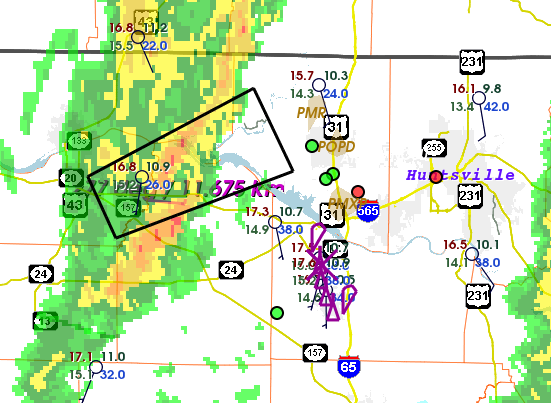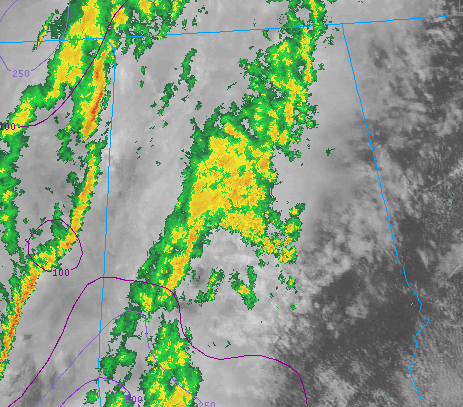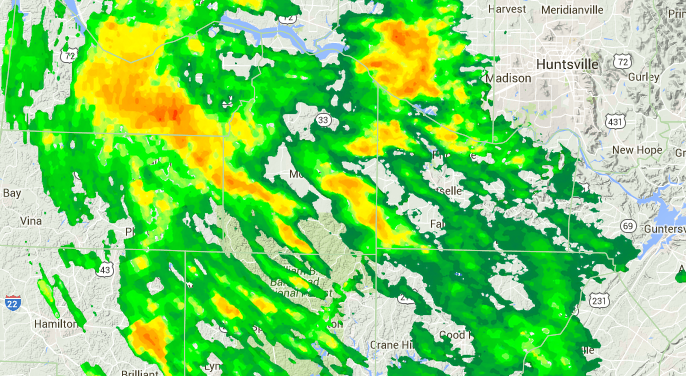Hope is fading, as the large MCS in southern AL has prevented the forecasted return of CAPE. Instead of ~1000 J/kg as forecasted earlier today, and 1000-1500 J/kg in yesterday’s forecast, we ended up with (wait for it….) 35 J/kg. And now shear is decreasing rapidly in the wake of the earlier system… with 850 mb (~ 1 km) flow of around 35-40 kt, whereas two hours ago it was 50-55 kt.
The echoes that grew rapidly at the time of the last update were quite shallow… less than 15,000 ft deep.
Unless conditions become more favorable quite soon, we are likely to call it quits.




